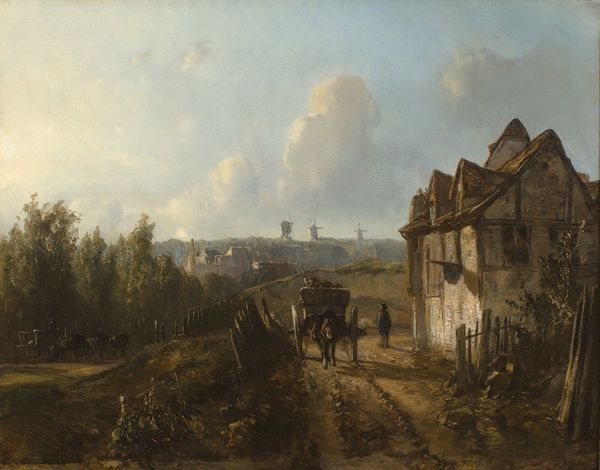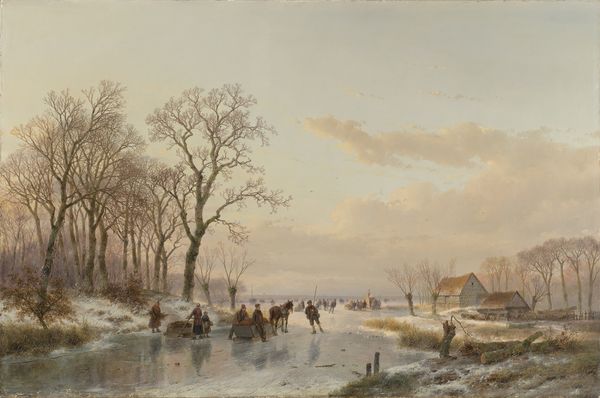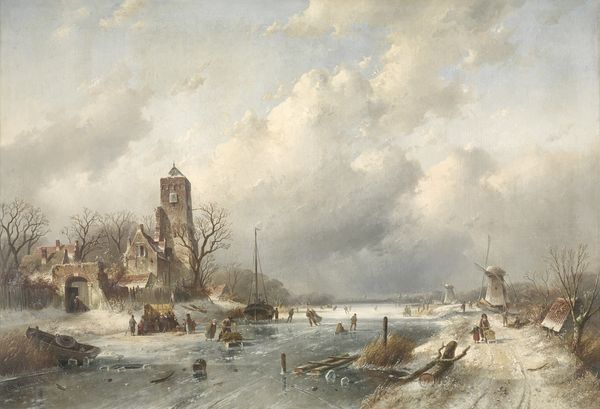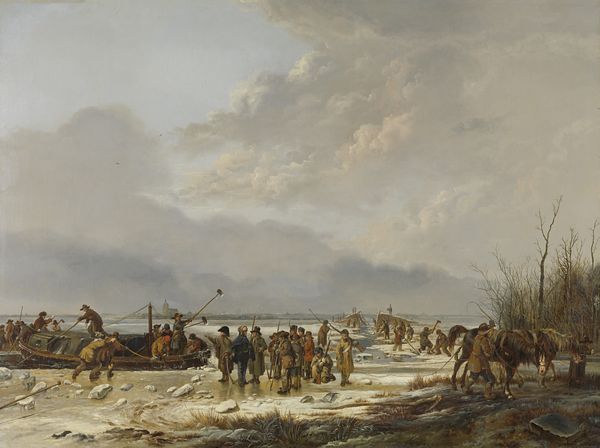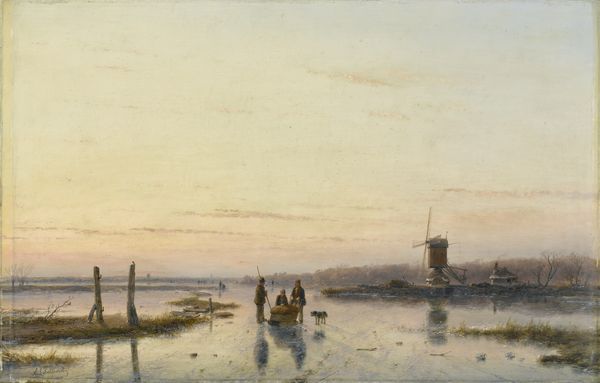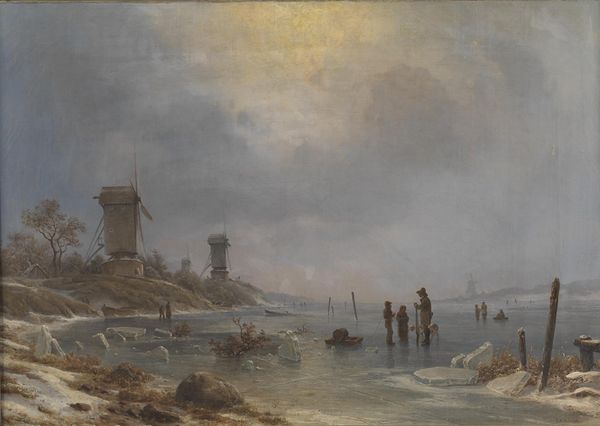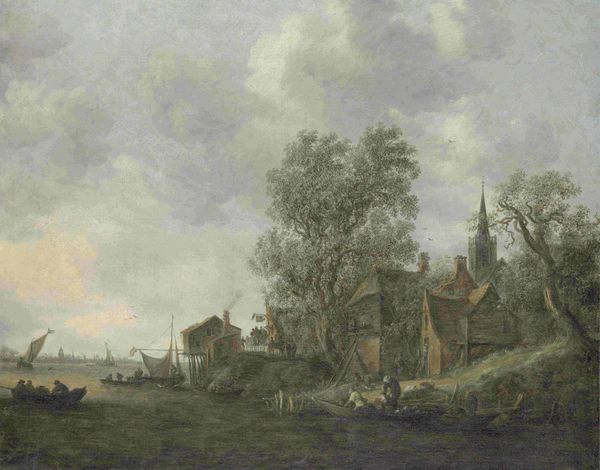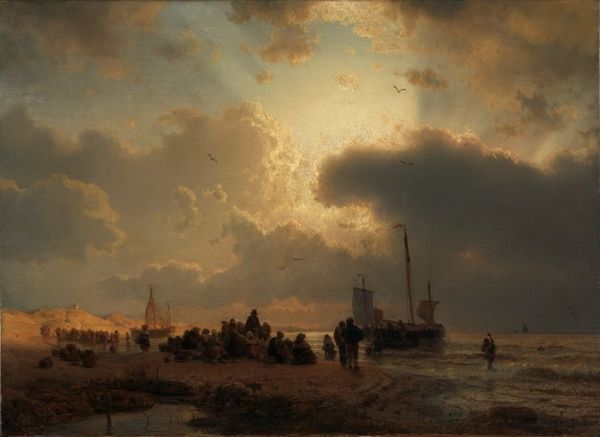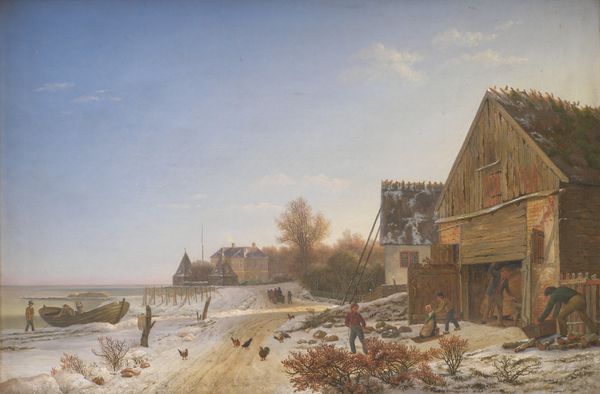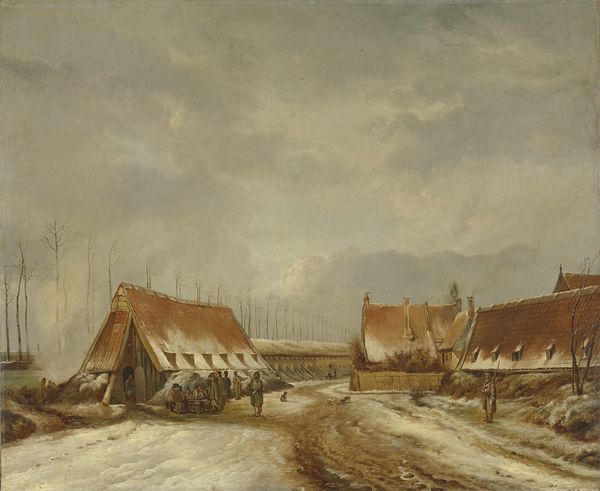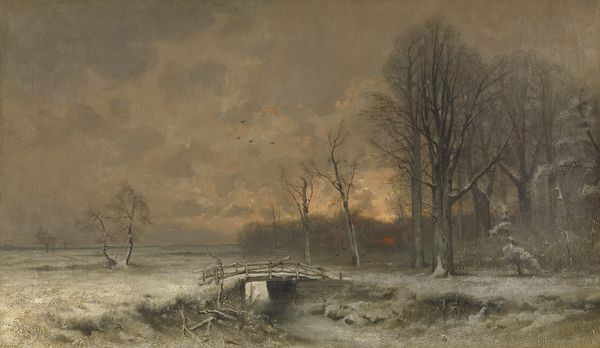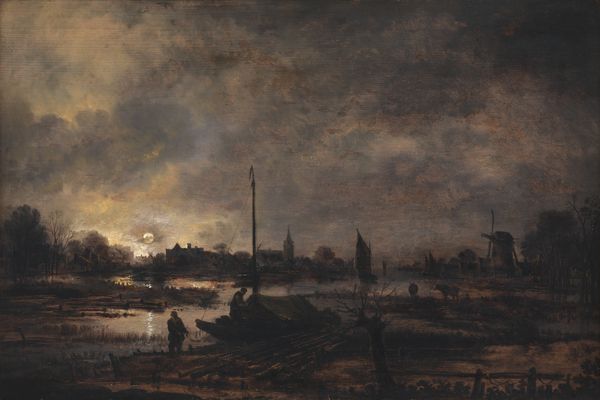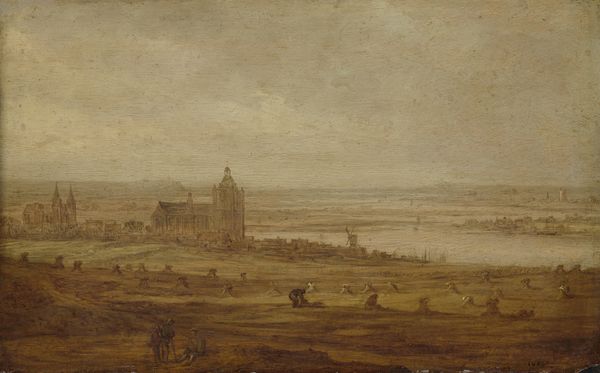
painting, plein-air, oil-paint
#
dutch-golden-age
#
painting
#
plein-air
#
oil-paint
#
landscape
#
oil painting
#
romanticism
#
cityscape
#
genre-painting
#
realism
Dimensions: height 81 cm, width 114 cm, depth 10 cm
Copyright: Rijks Museum: Open Domain
Editor: So, this is Charles Leickert’s “Winter on the IJ before Amsterdam,” painted in 1850 using oil paint. I find the stillness of the frozen landscape really captivating. What do you see in this piece? Curator: I’m immediately drawn to the labor represented here. The figures on the ice, are they traveling for work? What does that frozen river represent in terms of the movement of goods, of capital, in Amsterdam at this time? This isn’t just a pretty landscape; it’s a snapshot of a working environment, impacted by seasonal change, shaped by economic demands. Editor: That’s a perspective I hadn’t considered! I was focused on the atmospheric perspective and how the muted palette creates a sense of tranquility. But you’re right, there's a story of work and economy. How does the medium of oil paint factor into this? Curator: Oil paint itself played a huge role in how artists could represent the subtleties of light and texture which we see in those clouds and on the ice. Think about the production and trade of pigments, the accessibility of these materials, who benefits, and whose labor is hidden in this image of a "romantic" winter scene. The brushstrokes, the layering... these are physical acts, material processes. Editor: So you're suggesting we look beyond the idyllic image and consider the material conditions that made the painting possible and what it conceals? Curator: Precisely. What kind of work wasn't depicted in the artistic interpretation, or was altered through representation? This prompts us to think about the relationship between artistic creation, societal structures, and the realities of labour. Editor: That's really made me rethink the image, from seeing a serene winter scene to appreciating the underlying narratives about the period's social context. Curator: Exactly, the real value is not in the representation, but in understanding the tangible reality.
Comments
No comments
Be the first to comment and join the conversation on the ultimate creative platform.
